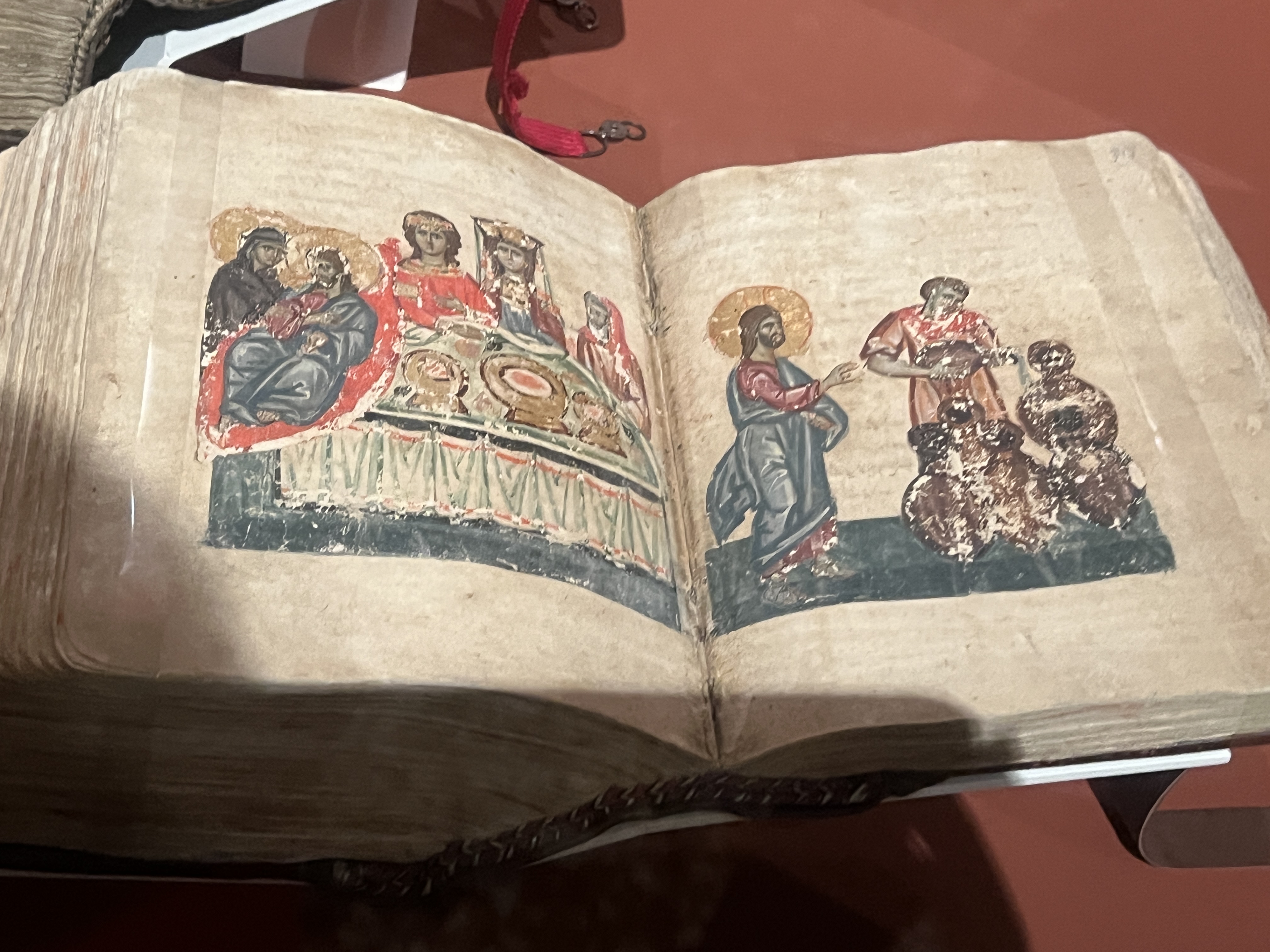A medievalist Zaroui Pogossian working at the University of Florence in Italy, curated the historical section of Armenians of the exhibition in order to recreate what Marco Polo might have seen in these regions. She is also the author of the chapter on Marco Polo and Armenia in the exhibition’s bilingual catalog, published in Italian and English. In particular, Pogossian has brought together artifacts from the manuscript collections of the Institute of Ancient Manuscripts- Matenadaran in Armenia and the Mkhitaryan Monastery in Venice, as well as objects from the History Museum of Armenia in Yerevan
TALİN SUCİYAN
At the beginning of April, on the occasion of the 700th anniversary of Marco Polo's death, the Palazzo Ducale, one of Venice's most important cultural centers and museums, opened an exhibition entitled "The Worlds of Marco Polo: The Journey of a 13th Century Venetian Merchant". The curators are art historians Giovanni Curatola and Chiara Squarcina. The exhibition aims to introduce the audience to Marco Polo's travels, which began when he was 16-17 years old and extended to China for 24 years, by dividing them into regions and, of course, to reconstruct the cultural worlds of the places Polo passed through during this period.
Marco Polo was born in 1254 as the son of a Venetian merchant family. The first room of the exhibition showcases artifacts unearthed during the archaeological excavations to find the house where Polo was born, as well as the digitized graphic reconstruction of the three-storey house.
It is noteworthy that Marco Polo's works translated into Turkish especially emphasize the fact that he followed the Silk Road and the time he spent in the Mongol Khanate, in China. Of course, the period Polo spent in China is important. However, another region that can be considered as important is Cilicia and the region where Armenians used to live. Cilicia was his first stop after Venice. Based on the specific names given by Polo in his journey starting from Ayas in Cilicia, it is estimated that he passed through Erzincan (Arçinga) possibly via Sivas, Erzurum (Argiron), and Erciş (Darçiçi) and continued on his way towards the foothills of Mount Ararat.
A medievalist Zaroui Pogossian working at the University of Florence in Italy, curated the historical section of Armenians of the exhibition in order to recreate what Marco Polo might have seen in these regions. She is also the author of the chapter on Marco Polo and Armenia in the exhibition’s bilingual catalog, published in Italian and English. In particular, Pogossian has brought together artifacts from the manuscript collections of the Institute of Ancient Manuscripts- Matenadaran in Armenia and the Mkhitaryan Monastery in Venice, as well as objects from the History Museum of Armenia in Yerevan. In this way, she was able to bring together fragments of khachkars, manuscripts, ceramic items from the cities or regions through which Marco Polo traveled. For example, a Bible written in 1338 in Sis (Kozan), a portrait of Levon IV, one of the Cilician kings, and a ceramic bowl from Ani are among the important artifacts representing the cultural and historical geography of Armenians in the Middle Ages. Pogossian also emphasizes the importance of exhibiting objects from Ani, including a precious piece of fabric, and underlines that it is a great luck that such artifacts have survived to the present day.
Pogossian also draws our attention to the fact that Marco Polo was culturally not far from his homeland in Cilicia. She says that the regions where Armenians lived were the central reference point for Marco Polo when describing Asia Minor. This must be directly related to the fact that Cilicia was a region that was integrated into the whole of the Mediterranean at the time of Polo's travels, with close ties to Venice in particular. Thus, even though Polo was geographically distant from Venice, he was in fact culturally well-connected.
In her essay for the exhibition catalog, Pogossian describes the 12th, 13th and 14th centuries as a period when the Armenian Church had intense contacts with Rome. We even read that Levon I's decision to pledge allegiance to the Roman Church from upon his coronation in 1198 caused great controversy among the Armenian clerical centers. However, Pogossian reminds us that this decision was in line with the co-eval political and economic interests of the Cilician Armenian Kingdom.
In her article, Pogossian points out that from the 1260s onwards, Cilician Armenians were caught between the Tabriz-based Ilkhanids and the Cairo-based Mamluks, and that this was well known to Marco Polo. From here, it is possible to understand how important the Cilician region was in a geography from Iran to Mesopotamia and Cairo.
In the other rooms of the exhibition, there are extremely impressive works that demonstrate Marco Polo’s itinerary as he passed through Iran, India and China and the kind of worlds he encountered. The exhibition will be open to visitors in Venice until the end of September.


